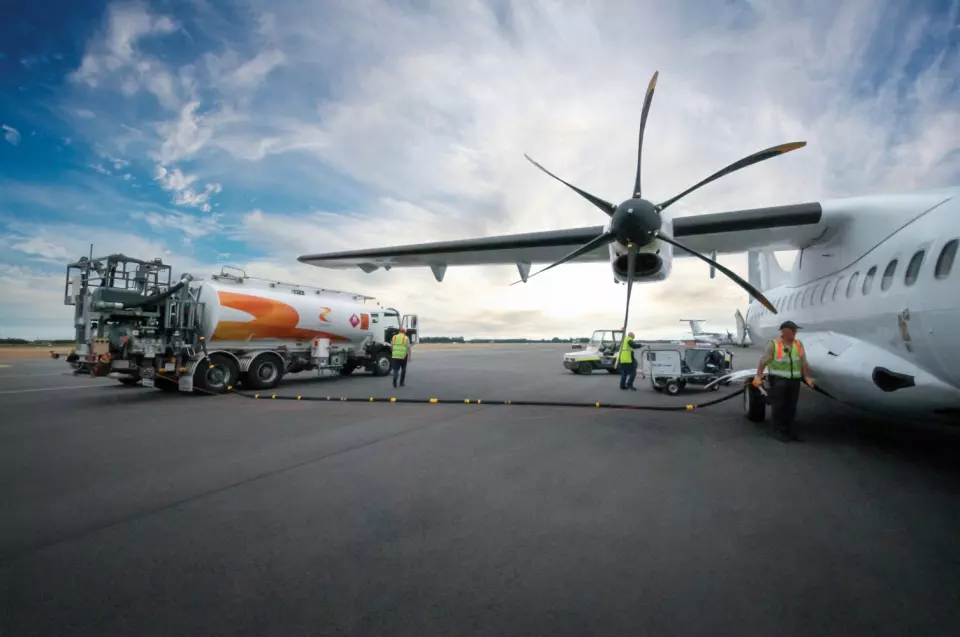Experts warn SAF delay could cost jobs and growth.
Australia’s recent billion-dollar push into renewable fuels has highlighted New Zealand’s lack of supportive policies, according to aviation and energy leaders.
“We’ve got a lot of catch-up to do,” says NZ Airports chief executive Billie Moore, adding that SAF is “an existential issue” for New Zealand’s economic growth, fuel security, tourism, and exports. “The longer we wait, the harder the price shock.”
Renewable fuels is an industry term for fuels made from waste and purpose grown feedstocks such as forestry remnants, city rubbish, tallow or used cooking oils. It encompasses both sustainable aviation fuel (SAF) and renewable diesel.
SAF, first used in New Zealand in September 2022, offers a practical pathway to reducing lifecycle carbon emissions from aviation. As a “drop-in fuel”, it delivers lower lifecycle carbon emissions and can be used immediately in existing aircraft as a direct replacement for standard jet fuel, without requiring any modifications.
Last month, the Australian Government announced a A$1.1 billion Cleaner Fuels Program to support its 2035 climate change target, with investment in low-carbon liquid fuels one of the package’s highlights. Globally, more than 190 governments, including New Zealand, have committed to net zero aviation emissions by 2050, while around 45 countries – including all of our top ten trading partners – are currently implementing or are considering SAF policies including minimum SAF blending or usage mandates. But New Zealand is lagging behind.
Z Energy (Z), which co-led New Zealand’s first SAF import trial with Air New Zealand in 2022, says the country can’t afford to hesitate again.
The New Zealand SAF Industry Roundtable – a cross-industry group that includes NZ Airports and was established to support government agencies on SAF policy – warns that although aviation is essential to our economy, New Zealand has yet to signal a clear policy direction on SAF. As international markets and mandates take shape, the Roundtable says our lack of action risks undermining our competitiveness, deterring investment, and compromising long-term fuel security.
Last month the New Zealand Government released its Aviation Action Plan, which included a commitment to evaluating SAF demand and industry participation, and beginning work with Australia to develop regional collaboration on SAF uptake and supply.
Moore says while the Roundtable welcomed the plan, agencies also need to dedicate time and thinking to New Zealand’s national interests when it comes to SAF.
“We really need to start taking this much more seriously,” she says.
“We need to be able to participate in these discussions with Australia in a high-quality way, and there are pieces of work that will need to be done in New Zealand on a SAF strategy, understanding what we want to achieve. Do we want domestic production? What should that look like?”
While New Zealand currently imports all of its aviation fuel, producing our own SAF could be viable one day, Moore says. A study by Cyan Ventures, published in July, found that domestic production of SAF in New Zealand could generate $1.3 billion in Gross Value Added (GVA) and create 5700 jobs.
But she says the best approach for New Zealand at the moment is a policy package including working as closely as possible with Australia. A coordinated trans-Tasman approach could create a single regional market for SAF, ensuring shared economic benefits and stronger energy security.
“Australia has all the right conditions, resources and set-up to be a global supplier of sustainable aviation fuel,” says Moore. “They’ve got feedstock available, investment mobilised… we think that the approach for New Zealand that makes the most sense is to see this as much as possible as a single economic market opportunity.”
Moore says our air connectivity will increasingly depend on the ability of airlines to access SAF.
“It perhaps has been put in the environment policy pot, but it’s a global strategic issue at this point, with major investment offshore and the development of billion-dollar industries. It’s something that anyone thinking about economic development should have an eye on.”
And the sooner we invest in SAF, the smoother the cost curve will be for airfares, Moore says. The Cyan Ventures study found in the near term, using 5% SAF could add just a few dollars per passenger per flight.
Z is another member of the Roundtable. General manager of supply Julian Hughes says New Zealand needs a collaborative effort across industries to increase confidence and investment in SAF, as well as a cross-party approach in Government to create incentives for SAF supply and demand.
“If everyone's off trying to do their own thing, it's really, really hard to get a new SAF industry up and running,” Hughes says.
A demand incentive could be similar to that of Singapore, he says, which has just introduced a SAF air transport levy; beginning in 2026, the country will enforce a mandatory 1% SAF blending target on all flights departing the country, with the target potentially rising to 3-5% by 2030.
Both Moore and Hughes warn that if we’re slow on establishing policy settings to support SAF, New Zealand runs the risk of becoming a less desirable place for travel and trade, as companies and travellers become increasingly aware of their carbon footprints.
“They’re not the panacea,” Hughes says of SAFs. “But they’re a bloody good way to start.”






